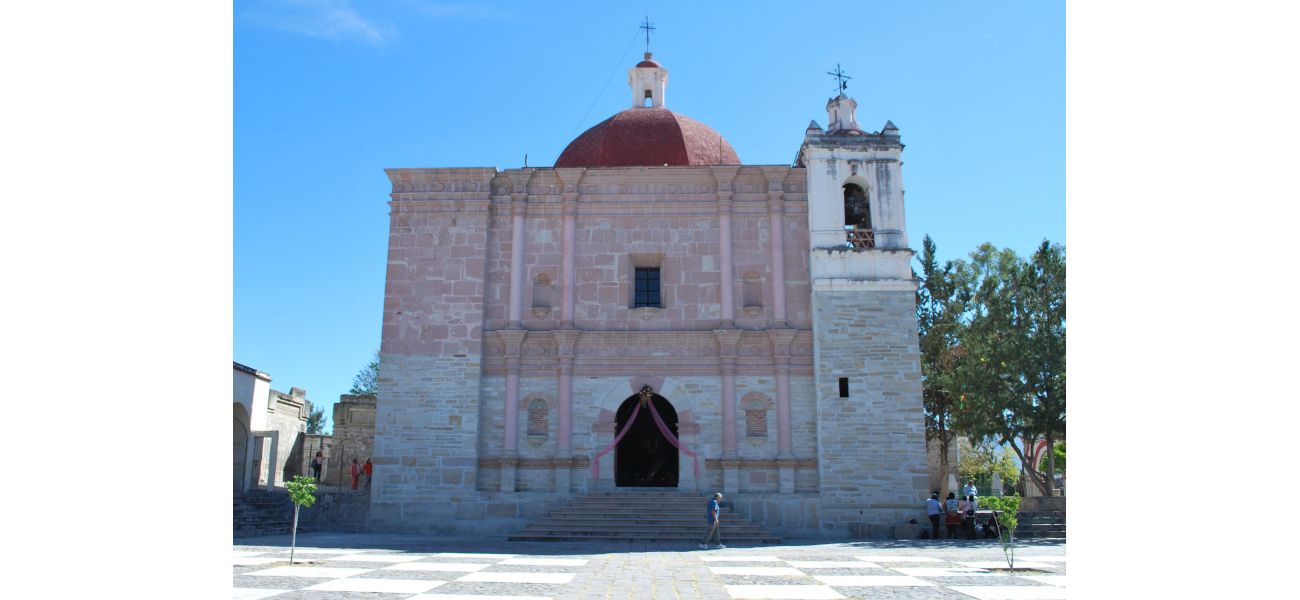Ancient underground tunnel discovered beneath church, believed to be an entrance to the underworld.
The tunnels were mentioned in texts before, but it is only recently that their presence has been revealed.
October 29th 2024.

The church, which stands proudly in Mexico, was built in the 16th century. It was constructed on the remnants of an ancient temple, adding a layer of history and culture to the already sacred site. But what lies beneath this historic church is what has recently captured the attention of archaeologists and historians alike.
Using advanced radar techniques, experts have uncovered a series of mysterious tunnels and chambers that stretch deep underground. These tunnels have been described as an "entrance to the underworld", a phrase that evokes images of adventure and intrigue. It is believed that these tunnels were used by the ancient Zapotec civilization, who worshipped a god of death named Pitao Bezelao.
In the 1500s, Spanish conquistadors arrived and built the church, named San Pablo Apostol, on top of the temple ruins as a display of their power. Despite previous excavations, there was no evidence to support the claim that these tunnels existed. However, with the use of modern technology, archaeologists have now confirmed their existence.
The team of experts, led by Marco Vigato, discovered a network of chambers and tunnels that extend to a considerable depth, some as far as 30 meters. One particularly large chamber, measuring 15 meters long and 10 meters wide, has been found under the Church of San Pablo Apostol. It is believed that these tunnels may connect to other areas and structures in the city, but further investigation is needed.
According to historian Francisco de Burgoa, the Zapotec kings were buried in these tunnels with precious jewels and artifacts, as well as the bodies of their enemies. This adds to the mystery and fascination surrounding the underground network.
Mr. Vigato explains that the location of the church on top of the temple was not a coincidence, but rather a deliberate act to symbolize the triumph of the new faith over the old. However, the age of the tunnels is still unknown and could possibly predate the Zapotec civilization.
The discovery of these tunnels is just one of many in the area. Natural caves in the Mitla region have been occupied and modified by humans for thousands of years. The earliest evidence of crop cultivation dates back almost 10,000 years. This just adds to the intrigue and raises questions about the origin of these underground tunnels.
Although the scans have revealed a complex network of tunnels and chambers, further research and study is needed to fully understand their purpose and significance. It is possible that these tunnels hold artifacts of historical importance, waiting to be discovered and shared with the world. This discovery is just another piece in the puzzle of Mexico's rich and diverse history.
Using advanced radar techniques, experts have uncovered a series of mysterious tunnels and chambers that stretch deep underground. These tunnels have been described as an "entrance to the underworld", a phrase that evokes images of adventure and intrigue. It is believed that these tunnels were used by the ancient Zapotec civilization, who worshipped a god of death named Pitao Bezelao.
In the 1500s, Spanish conquistadors arrived and built the church, named San Pablo Apostol, on top of the temple ruins as a display of their power. Despite previous excavations, there was no evidence to support the claim that these tunnels existed. However, with the use of modern technology, archaeologists have now confirmed their existence.
The team of experts, led by Marco Vigato, discovered a network of chambers and tunnels that extend to a considerable depth, some as far as 30 meters. One particularly large chamber, measuring 15 meters long and 10 meters wide, has been found under the Church of San Pablo Apostol. It is believed that these tunnels may connect to other areas and structures in the city, but further investigation is needed.
According to historian Francisco de Burgoa, the Zapotec kings were buried in these tunnels with precious jewels and artifacts, as well as the bodies of their enemies. This adds to the mystery and fascination surrounding the underground network.
Mr. Vigato explains that the location of the church on top of the temple was not a coincidence, but rather a deliberate act to symbolize the triumph of the new faith over the old. However, the age of the tunnels is still unknown and could possibly predate the Zapotec civilization.
The discovery of these tunnels is just one of many in the area. Natural caves in the Mitla region have been occupied and modified by humans for thousands of years. The earliest evidence of crop cultivation dates back almost 10,000 years. This just adds to the intrigue and raises questions about the origin of these underground tunnels.
Although the scans have revealed a complex network of tunnels and chambers, further research and study is needed to fully understand their purpose and significance. It is possible that these tunnels hold artifacts of historical importance, waiting to be discovered and shared with the world. This discovery is just another piece in the puzzle of Mexico's rich and diverse history.
[This article has been trending online recently and has been generated with AI. Your feed is customized.]
[Generative AI is experimental.]
0
0
Submit Comment





